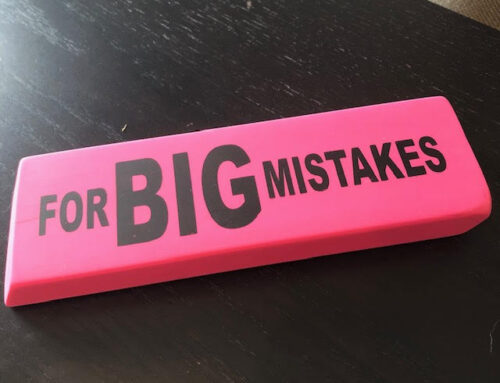I spent years writing a book – in my head.
But I could not seem to make any meaningful progress getting my book written. At the time, my approach to writing entailed waiting for big blocks of time to magically appear, so I could churn out all my thoughts and capture them on my screen. Yet this time rarely became available. Weeks would go by between writing sessions, which hindered any momentum I had gained from earlier sessions.
Then I started working with writing coach, Daphne Gray-Grant. Gray-Grant required me to commit to daily writing goals as part of my routine. At first, I resisted. I believed I needed to commit to at least one hour per day to make any worthwhile progress, and of course this wasn’t always possible.
After much negotiation, I reluctantly agreed to commit to short writing bursts of 10 minutes each day but deep down I never believed these tight time frames would amount to much. One year later, I published my first book.
What was the secret ingredient I was missing for so long? Once I incorporated a daily writing habit into my routine, regardless of the time allotted, I was able to achieve my goal and produce the result I wanted. (And now, writing is a daily habit for me, no matter what).
In retrospect, this all seems obvious. The power of a routine is how it allows us to block time for the priorities that matter most. And establishing a solid routine leads us to healthy, productive and successful habits.
But perhaps most importantly, as we all continue to adapt to a different way of working, we can look to our routine to reduce overwhelm and calm anxiety. Instead of constantly finding ourselves winging it, our routines keep us grounded. We have a much better ability to plan when we can do things when we have a routine. This reduces the stress of feeling we must accomplish everything now.
And yet building – and keeping – a proactive routine is something many struggle to do. Instead, they choose to wait for some elusive “free time” that never shows up.
It’s not until we proactively block time for our key priorities, that we create the space to focus on what matters most. Carving out this time in calendar before other things get in the way is key to getting things done.
If you find it a challenge to protect focus time, try to remind yourself you already do a great job at protecting focus time – that is, when you meet with others. You don’t stop to check your email or answer your phone (at least I hope not) when you are in a meeting with someone else. Can you give yourself this same courtesy?
Your focus time slot may vary day to day. Some days it may be 30 minutes, some days it may be as low as 20 minutes, and other days it could be 60 or even 90 minutes. Only you know what focus routine works best for you. But whatever the time frame, you deserve an uninterrupted block of focus time as part of your daily routine.
Your routine should also include your non-negotiable commitments, such as weekly team meetings, as well as time to keep up with email and personal goals like exercise, family time and sleep – yes, sleep! This video includes 4 tips to build your proactive routine.
Remember, this is not a science. Are you going to be able to stick to your routine 100 percent of the time? No. There will always be exceptions. Unexpected tasks can – and will – come out of nowhere, requiring flexibility and adjustment. In fact, we need to build a buffer in our routine exactly for the unexpected. This may include technology issues, unexpected phone calls and interruptions – er, requests – from the little school-age co-workers we may now have working alongside us.
But when we effectively manage the things we can control with a proactive routine, we are better prepared for these exceptions. You don’t have to throw away your routine because of a few off days. You can always come back to it tomorrow.
Our routines may look a little different than they used to but the basic principles of building and keeping a routine still apply. If you’re interested in a sample routine template, please email us.
Using a routine keeps us on track to do our best work – and feel our best. If you are having trouble adjusting your routine to a different way of working, let us help.







Leave A Comment